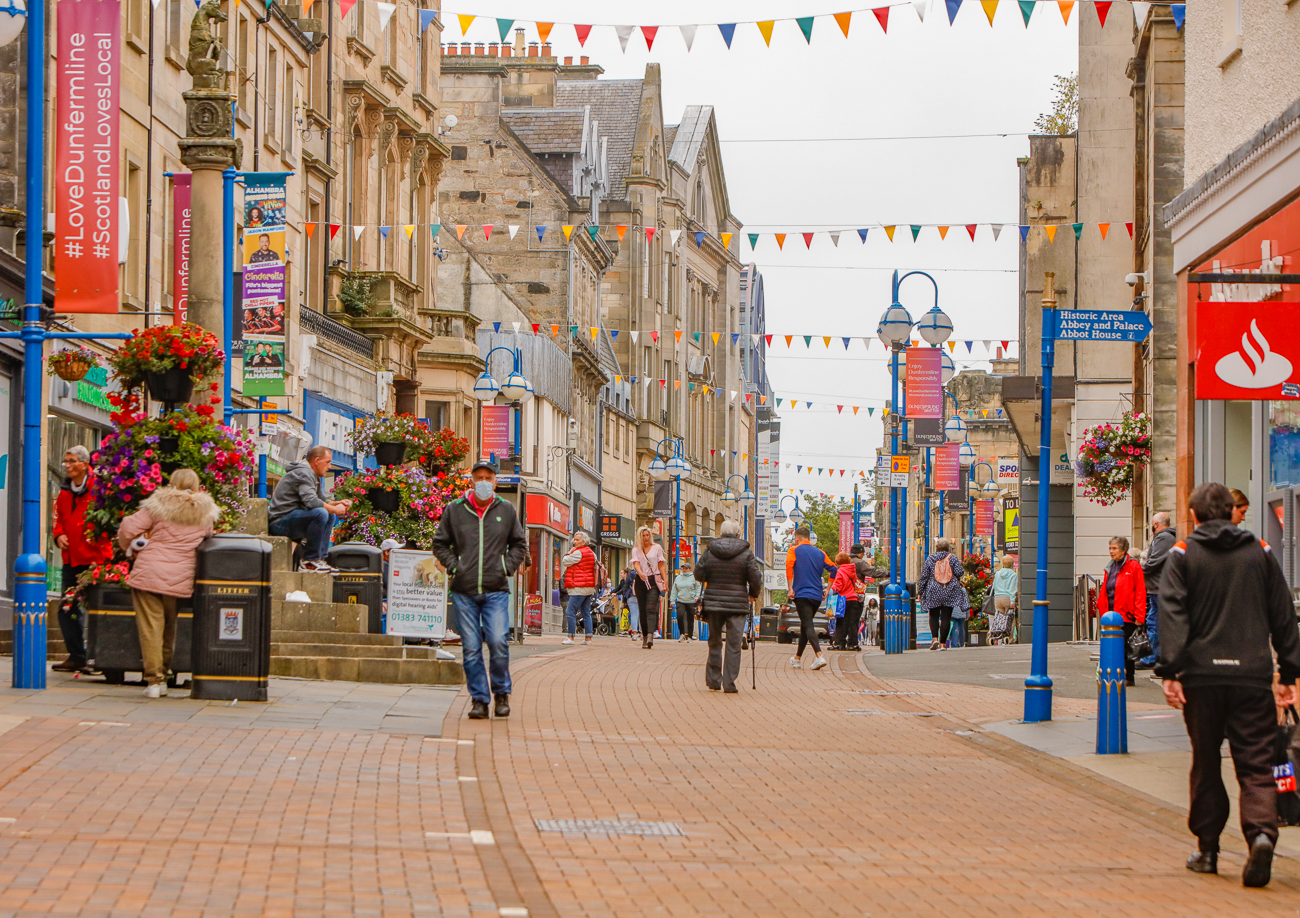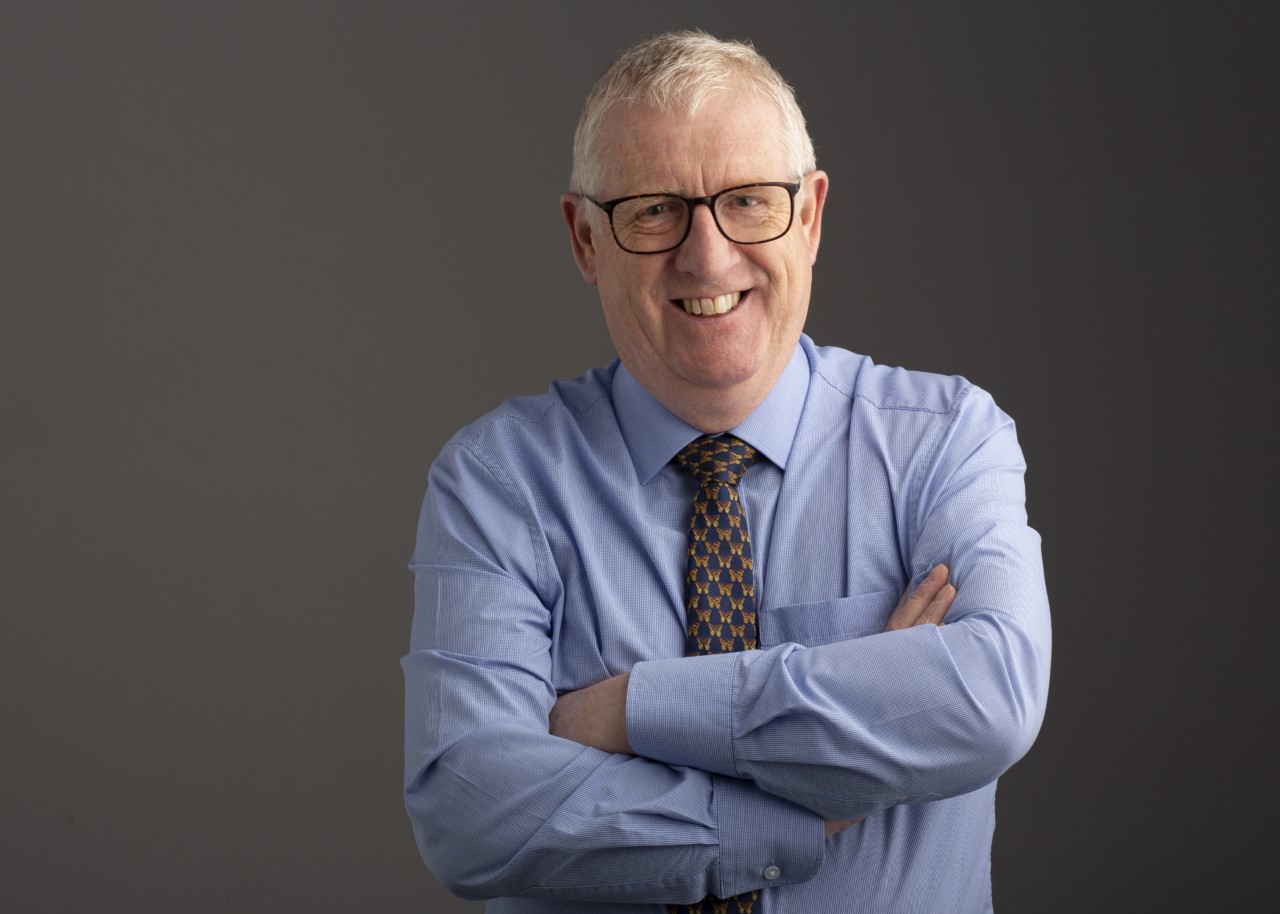Making capital: Scotland's cities need money, so what's the best way to fund them?
One year ago Scotland’s ancient capital, Dunfermline, became the country’s newest city. For many locals, this was not before time.
Official city status came a mere 952 years after Queen Margaret – later canonised as Saint Margaret – founded the priory which would become Dunfermline Abbey, the burial place of kings like Robert the Bruce. And it was conferred just a short 174 years after local lad o’pairts Andrew Carnegie left with his family for the US, where he would make his fortune in iron and steel.
The status also followed a civic honours competition to mark the Queen’s platinum jubilee in which, bolstered by the legacies of these and other local icons, the Auld Grey Toun left its near neighbour St Andrews for dust. Offering his commiserations to the latter, Jim Leishman, the Labour provost of Fife Council, suggested there was some logic to the result. “The people of Dunfermline have always known that Dunfermline is a city,” he said at the time, “that’s why we have the City Car Park, the City Hotel and City Cabs, but it’s great to finally get official recognition of this.”
Still, it took more than a few conveniently named businesses to clinch the title. The bid included area maps, stats, tables and lists of green spaces, transport routes, leisure facilities and associations with the monarchy. Outwith Scotland, Bangor’s pitch brought it success, as did those for Milton Keynes and Colchester, among others, and when he visited Dunfermline to confer city status in October, the trip took King Charles to the birthplace of the last Scottish-born regent, Charles I. And yes, that history is something to be proud of, local leaders say – but the promotion from town to city is not an end in and of itself. It’s a ticket to a future of innovation and growth, they claim; a pass to an exclusive club with greater access to the investment needed to build a new legacy for the people.
“That city status level gives us access to a range of resources,” says Gordon Mole, head of business and employability at Fife Council. “We’ve made some really positive connections. This is the first stage of an evolving journey.”
That journey has to be paid for, and Dunfermline is one of many places vying for a share of public cash through funds involving both Scottish and UK Government money. It’s a complex picture, and one that, according to a former Scotland Office minister, must now be reviewed. “We have got to get to the point of thinking, ‘what comes next?’” Iain Stewart told Holyrood.
.jpg)
The Conservative MP for Milton Keynes South, Stewart served as minister for Scotland from June 2020 until September 2022, a period that saw him take on responsibility for City Region Deals and Growth Deals, funding packages agreed between the UK and Scottish Governments and regional partners like councils. Every part of Scotland is covered by one or the other of these, with Dunfermline falling into the Edinburgh and South East Scotland City Region Deal.
That £1.3bn agreement aims to support economic growth by delivering better housing, infrastructure and skills and, in the words of the Scottish Government “unlocking access to good opportunities for people across the region”.
Altogether, the investment programmes – aimed at addressing long-term inequality linked to the decline in heavy industry – have drawn more than £1.9bn from Holyrood and £1.5bn from Westminster. Then there’s the UK Government’s Levelling-Up Fund and the two green freeports for the Forth and Inverness and Cromarty Firth. There were six different bids for freeport status and, indeed, competitive bidding underlines much of this funding, the idea being that local authorities can use the cash for what they really want. For Shetland Islands Council, that’s a new Fair Isle ferry (£27m); for East Ayrshire Council, that’s the refurbishment of Kilmarnock’s historic Palace Theatre (£20m).
Stewart says there are “really exciting projects happening across Scotland” under the current regime, but the individual sums committed are not “transformational” and, in a new paper for the think tank Onward, he argues that it’s time to think about whether changing the system could deliver bigger results for Scotland. That might mean, he says, combining public with private investment to increase the pot through pension funds, academic research and development finance through UKRI and more. And it could also mean putting an elected figure such as a provost at the head of such projects.
It’s Stewart’s bid to get the issue on the agenda before current funding tranches expire. “There’s an opportunity; the whole would be greater than the sum of the parts if we look at a way of bringing some together,” he says of the existing funding streams. “I think we are starting to see some very interesting options.
“If you start to look across the piece and not just at straight government money, but academic research and development, the opportunity of leveraging private money as well, you start to get quite an exciting prospect. I really do hope this is the start of a dialogue about it.”
According to Bloomberg UK’s Levelling-Up Scorecard, which tracks 12 key socioeconomic metrics, almost all of Scotland’s 59 Westminster constituencies are falling behind London and the south east of England, with only Gordon and Banff and Buchan bucking that trend. In an article for the UK in a Changing Europe think tank, Birmingham University associate professor Rebecca Riley wrote that levelling up is the new name for a long-term issue and noted the “plethora of interventions” made since the late 1990s. “Realistically, to improve places we need consistent and coherent funding over the long term to change large scale structural issues,” she wrote, arguing against “small pots of ‘hanging basket’ competitive investment” and stating that “constant change to funding systems, on top of institutional reorganisation” make it difficult to navigate the applications process.

Dunfermline and West Fife lost out on a £29m Levelling-Up Fund bid in January, though other parts of the region were successful. Dunfermline North councillor Gordon Pryde calls that a “big blow”. “We had great plans for that money; on the back of Dunfermline being granted city status, we wanted to really improve the city centre,” he says.
Back at the big reveal last May, provost Leishman said the new status gave Dunfermline “the wider recognition that it deserves as one of the fastest-growing urban areas in Scotland, offering all the amenities that any modern city could hope for”. “City status will help us grow economically and as a tourist destination and will have a positive impact on Dunfermline and the surroundings”. It’s a fair claim – after all, Perth, which has lived up to its Fair City tag since 2012, has seen its economy expand by 12 per cent in the decade since.
VisitScotland says it’s too early for the figures to show shifts in footfall from domestic and international visitors, but local leaders have been busily making connections with institutions in Pittsburgh, to where the Carnegies emigrated, and looking at the example of Dunfermline’s Norwegian twin city, Trondheim. The accord across the North Sea dates back to 1945, when young people from both places agreed a bond of friendship, and Dunfermline & West Fife MP Douglas Chapman sees the Nordic centre as an example of what’s possible. “Trondheim is Norway’s innovation capital and that’s how they sell themselves. In terms of tourism, they carry out a range of festivals around the year on culture, heritage, food. That’s the kind of thinking I’d love to see around Dunfermline,” he told Holyrood.
“We are absolutely delighted to have city status confirmed, but what I want to see is that it doesn’t just become a plaque on the wall but offers a useful boost to the city and the whole region.”
The Forth green freeport “might not be everyone’s cup of tea”, he says over concerns from critics like the Scottish Greens over taxation and transparency, but it will “provide a different offer that we can provide to inward investors”, and if Chapman’s campaign to reinstate a ferry link to Europe is successful, that will be “pieces of the jigsaw coming together in quite an exciting environment”. “I’m trying to look at it as a real economic hotspot for the whole of the East of Scotland and probably the whole of Scotland actually, because we’ve got so much there that we can build on,” he says.

Ahead of the first Dunfermline City Conference on 27 June, where work will take place to create a “coherent and robust vision for the future”, Mole is similarly positive. Dunfermline has now joined the Scottish Cities Alliance, membership of which allowed it a place at the UK Real Estate Investment and Infrastructure Forum to present itself to big-money backers as “a place to invest”. “Some of this work would have progressed without city status, but it raises our profile and gives us access to a range of resources,” Mole says.
He and Chapman both cite developments like the new £180m Dunfermline Learning Campus, which opens next year and brings school and college together, as a project to be proud of. Perhaps in the future it’ll be something the area is known for. For now, landmarks include the UK’s biggest Amazon fulfillment centre, which spans 14 football pitches, Pittencrieff Park, known locally as The Glen, and the award-winning Dunfermline Carnegie Library & Galleries.
Caroline Warburton, local destination development director for VisitScotland, says city status has “undoubtedly” helped the economy rebuild from the pandemic. “It’s given us something new to talk about,” she says of an industry that thrives on new trends while promoting heritage. The historic architecture goes down well on Instagram, while there are plans to make more of more contemporary cultural capital through bands like Big Country and The Skids. “No two cities are the same,” she says. “We are trying to tell a unique story.”
Stewart says having a ‘unique’ approach is the whole point of City Region Deals and similar schemes. “The point is not about central government edicting what should happen,” he says. “It’s the local areas decide, it will mean different things in different places.”
However, the Scottish Government argues that these forms of funding represent not more localism, but more centralism – more governance from London. The SNP-led administration has complained of a power grab when funding has gone to projects that fall into devolved areas, such as transport. Stewart says he would “hope” to avoid further constitutional tension, pointing out that the longer-term nature of the investments mean they “go beyond any government or political cycle”, and suggests using local provosts to improve accountability and governance.
Adam Hawksbee, deputy director of Onward, acknowledges that some of the funds “have caused frustration” and “there clearly needs to be a partnership approach”. “When it comes to how you grow economies, there are clearly going to be areas where you need the input of the Scottish Government and the UK Government,” he says, and stripping away the confusion around overlapping deals could create an easier model to manage. “It’s definitely too complex. The points we make are about that complexity, about not making the most of the money that’s been around.”
Holyrood Newsletters
Holyrood provides comprehensive coverage of Scottish politics, offering award-winning reporting and analysis: Subscribe